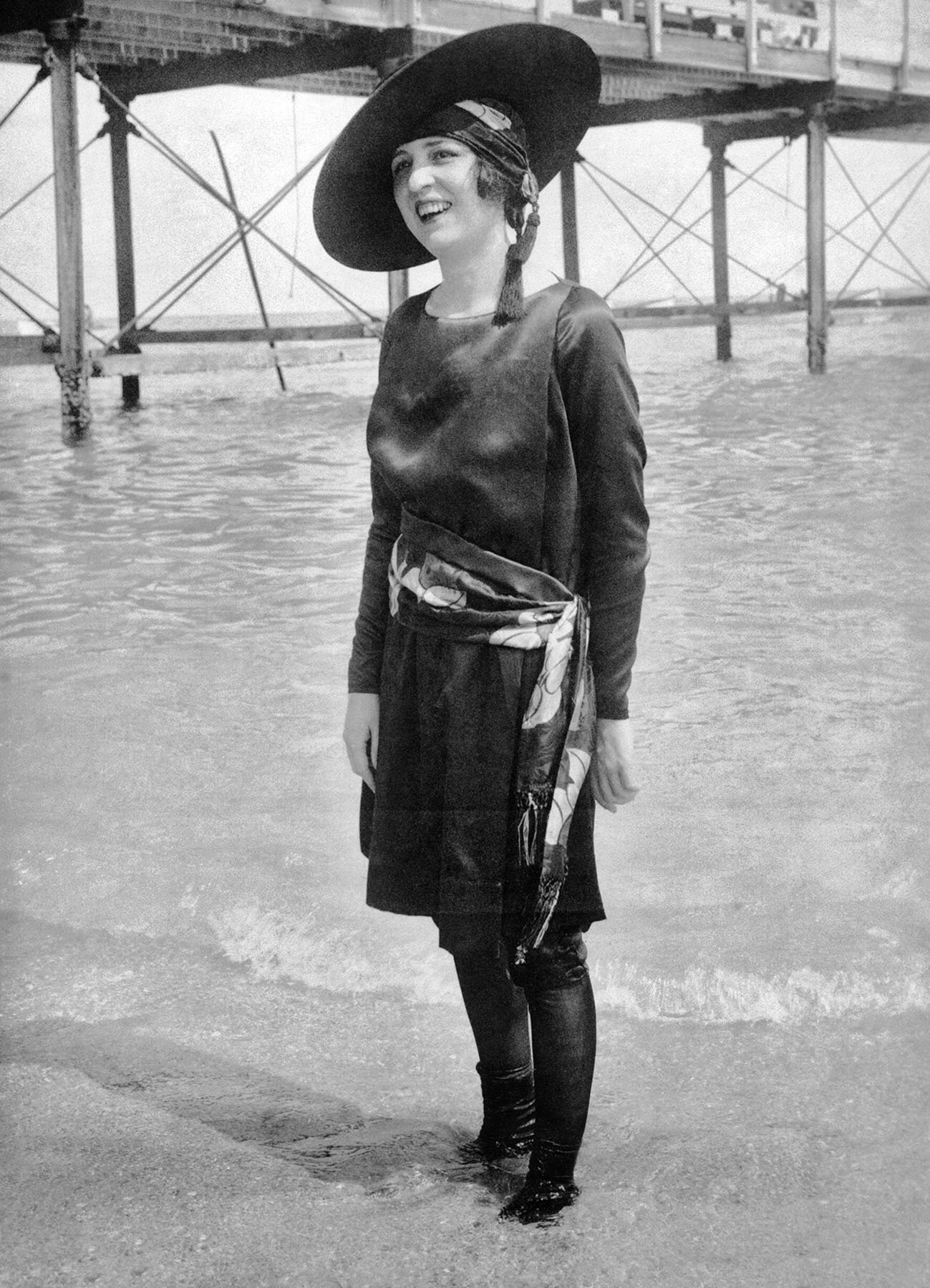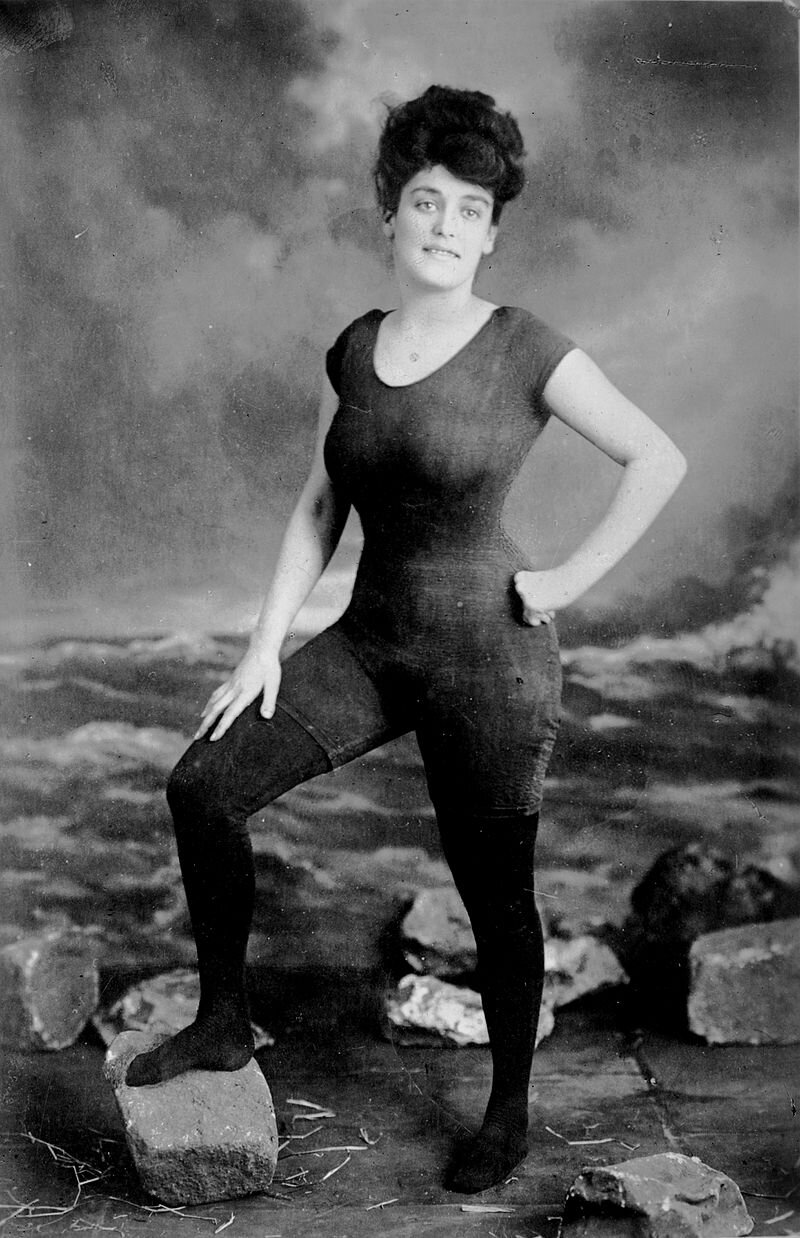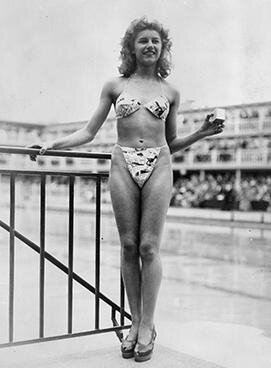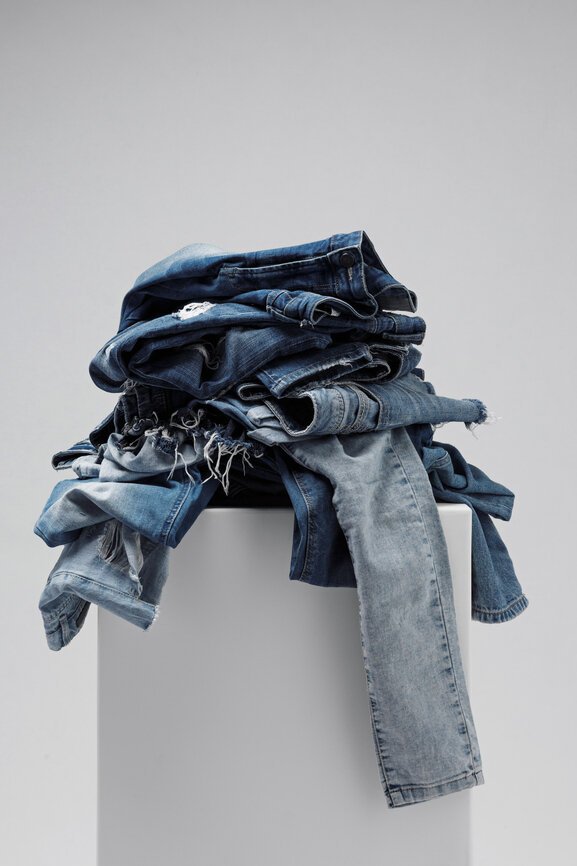
The Scandalous History Of The Bikini
Outrage about what women wear is not new.
“The history of the bikini is a classic tale of the patriarchy at work; suppression, objectification, and constant judgment.”
Back in 2011, I was flipping through the channels on a hotel TV, when I landed on the Sundance Channel as they were airing a special about the history of the bikini. I learned that the unveiling of the first string bikini was such a scandal that the only person willing to model it was a “showgirl” or stripper.
Something that now seems somewhat mundane caused a virtual riot with its inception. The history of the bikini is a classic tale of the patriarchy at work; suppression, objectification, and constant judgment.
Image: Underwood Archives
Most retellings of the swimsuit’s history begin by mentioning the outfits Roman gymnasts would don during the 4th century. These looks were worn during practice, as well as competition, and consisted of essentially bandeaus and bikini bottoms. However, as time went on, dress became increasingly conservative in the west.
At the turn of the 20th century, women were finally allowed to enjoy public beaches, though the strict dress codes kept many from actually participating in the fun. Multiple layers were required, including pants which women sewed weights into at the bottom in order to avoid showing any leg. Some took modesty even further by using what was called a bathing machine. This was basically a hut on wheels, made from wood or canvas, which women would use to stay hidden from the public:
The bather entered the machine fully dressed and donned her swimming clothes inside. Then, horses (or occasionally humans) pulled the cart into the surf. The bather would disembark on the seaside, where she could take a dip without being observed from the shore. – Slate
Australian swimmer and silent film star Annette Kellerman was the first notable woman to combat these norms by wearing a form-fitting one-piece to the beach. The outfit resembled what today we see high school wrestling teams wear. Yet, in the 1900s, it caused such an uproar that the rebel was arrested for ‘indecent exposure’. Because of her case, restrictions were lessened and by 1915 women were wearing one-layered swimsuits across the globe.
Swimwear became more liberating in the early 1940s. Bathing suit designers took advantage of the fabric rationing during WWII and the two-piece was born! This wartime variation was worn by the masses including Hollywood film stars like Ava Gardner. While the two-piece gave women the option to show much more skin, it still gave full coverage to the navel, hips, backside, and breasts.
Bathing suits took a turn for the scandalous in 1946. Parisian designer Jacques Heim unveiled the “world’s smallest bathing suit,” called the atome. Shortly after, Louis Réard (another Frenchman) designed an even smaller swimsuit and named it le bikini. Both of the names of the designs were inspired by the nuclear war raging around them, although the latter made a larger splash: it was introduced just four days after the US began testing atomic bombs in the Bikini Atoll.
In a rather bold marketing ploy, Réard named his creation le bikini, implying it was as momentous an invention as the new bomb. – Slate
Image: Hulton Archive/Wikipedia
While le bikini was not technically the first to bring bathing suit bottoms below the navel, it has gone down as the design which changed the fashion game forever. Louis Réard’s string bikini was the image they flashed on the Sundance Channel, modeled by nude dancer Micheline Bernardini because no French runway model would wear it.
At the outset, bikinis were facing possible bans at beaches across European, Mediterranean, and Catholic nations, and even the Miss World Contest and pageants worldwide (which is wildly ironic today).
Unfortunately for those who turned up their noses at this new swimwear, the bikini eventually hit the mainstream. Albeit, not without a good dose of scrutiny. Brigitte Bardot is widely credited with popularizing the new revealing style during her beach vacation to Cannes in the mid-1950s. Other Hollywood stars followed suit. However, Elle notes that the mainstream media was still not on board:
It is hardly necessary to waste words over the so-called bikini since it is inconceivable that any girl with tact and decency would ever wear such a thing. – Modern Girl magazine circa 1957
Tides began to change in the 1960s and even Neiman Marcus was declaring the bikini the “next big thing.” Popular culture accepted the new swimsuit as well, starting with the infamous song “Itsy Bitsy Teenie Weenie Yellow Polkadot Bikini” by Brian Hyland. Around the same time, an “iconic moment in cinema history came in 1962,” according to TIME. This unforgettable moment came in the form of a scene during the James Bond film Dr. No. Actress Ursula Andress rose from the water in a white bathing suit which later was sold at auction for $40,000.
A few years later, in 1964, the male gaze continued to promote the style with the first bikini pictured on a Sports Illustrated cover. More movies took advantage of the skimpy swimwear’s popularity throughout the following decades including films such as One Million Years B.C., Star Wars, Fast Times At Ridgemont High, and Coffy.
The bikini’s popularity continued to be driven by aesthetics in the late 1980s when thong swimsuits spread from Brazil to the US. However, in the 1990s, athletes and feminist activists alike began pushing against the bikini, arguing that the suits were simply a tool for objectification. Professional volleyball player Gabrielle Reece was cited in a book exploring sexualization of women in American culture complaining that the beach sport’s uniform was simply uncomfortable. Later, in 2004, Australian player Nicole Sanderson spoke to The Guardian about her thoughts on the beach volleyball outfit:
Personally, I feel like it’s kind of disrespectful to the female players. I’m sure the male spectators love it, but I find it a little bit offensive. – Nicole Sanderson
Now that bikinis have become a normal part of summer wardrobes, we have to tackle the next discussion of who is “allowed” to wear them. An international conversation has been taking place over the internet and within the fashion industry surrounding inclusivity and representation of all bodies, not just some.
First women were told they couldn’t show their legs, then they were oversexualized. Now we’re being told we shouldn’t wear a bikini if we don’t have a flat stomach. It seems, just like many issues involving female or female-identifying individuals, that we can’t win.
We might as well wear whatever we want.
Audrey Stanton was born and raised in the Bay Area and is currently based in Los Angeles. She works as a freelance writer and content creator with a focus in sustainable fashion. Audrey is deeply passionate about conscious living and hopes to continue to spread awareness of ethical consumption.









